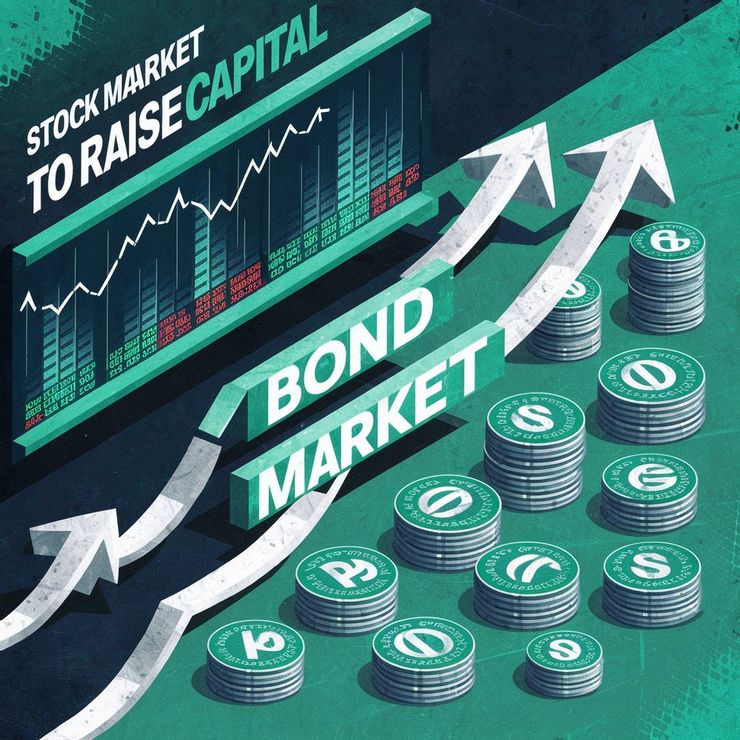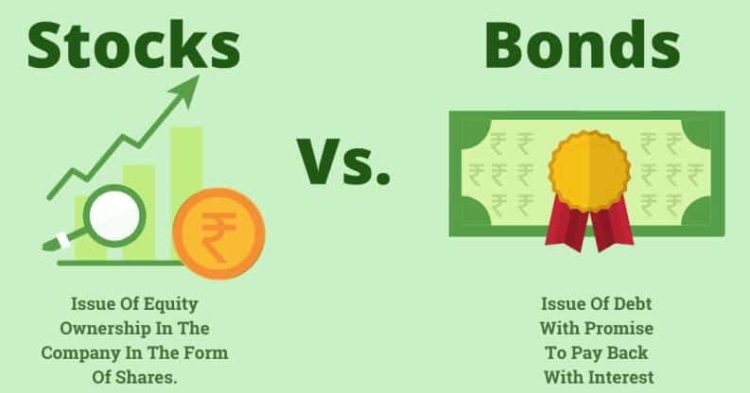Introduction
In recent years, global financial markets have experienced increased volatility, driven by a combination of factors, including economic uncertainty, inflationary pressures, geopolitical tensions, and shifts in monetary policy. Stock markets, in particular, have been prone to significant swings, as investor sentiment often reacts sharply to economic data, earnings reports, and central bank actions. This market volatility has led investors to reconsider their investment strategies, especially when it comes to risk management.
A common approach to managing risk in a volatile market is a diversified portfolio, typically consisting of a combination of stocks and bonds. The fundamental idea behind this strategy is that stocks and bonds often have a negative correlation, meaning when one asset class is performing poorly, the other might perform well, thus helping to smooth out overall portfolio performance. But as volatility in the stock market continues to rise, the effectiveness of this traditional asset allocation strategy has come into question.
This article explores the dynamics of stock and bond markets, assesses the effectiveness of using a bond-stock portfolio to hedge risk in the face of increasing market volatility, and considers other strategies that may complement or replace this traditional approach.
1. Understanding the Risk-Return Tradeoff in Stocks and Bonds
Before diving into how a combination of stocks and bonds can help hedge risk, it’s essential to understand the nature of these two asset classes and their typical roles in a portfolio.
A. Stocks: High Risk, High Reward
Stocks represent ownership in companies, and their value is driven by the performance of the underlying business, market conditions, and overall economic trends. Historically, stocks have provided higher returns over the long term than bonds, but they come with increased volatility.
- Stock Market Volatility: The value of individual stocks and stock indices can fluctuate significantly in response to various factors, including corporate earnings, economic data, geopolitical events, and market sentiment. This volatility can lead to sharp declines in stock prices during periods of economic or market uncertainty.
- Long-Term Growth: Despite short-term fluctuations, stocks have historically outperformed other asset classes over the long term, driven by corporate profit growth and economic expansion.
For conservative investors, this volatility can be challenging, especially when markets experience steep corrections or prolonged bear markets. However, the growth potential of stocks remains an essential component of long-term wealth-building.
B. Bonds: Lower Risk, Steady Income
Bonds, on the other hand, are debt securities issued by governments or corporations, and they generally offer a lower risk profile than stocks. The investor in a bond is essentially lending money to the issuer in exchange for periodic interest payments (coupons) and the return of the principal at maturity.
- Lower Volatility: Bonds tend to have lower price volatility compared to stocks. Their prices are influenced by interest rates, inflation expectations, and the creditworthiness of the issuer. Bond prices typically rise when interest rates fall and fall when interest rates rise.
- Income Generation: Bonds are often seen as income-generating investments, providing investors with a steady stream of interest payments. The predictability of bond payments makes them a stable source of income, particularly for retirees or conservative investors who rely on consistent cash flow.
- Capital Preservation: For investors with shorter time horizons or a lower risk tolerance, bonds provide a safer investment, especially government bonds or high-quality corporate bonds.
However, bonds can still experience fluctuations in price, particularly when there are changes in interest rates or credit risk. Rising interest rates, for example, can lead to declines in bond prices, which has been a concern in recent years as central banks around the world have raised rates to combat inflation.
2. The Role of Bonds and Stocks in a Diversified Portfolio
A diversified portfolio typically includes a mix of stocks and bonds in order to balance risk and return. The idea is that while stocks provide growth potential, bonds offer stability and income. The key question is whether this traditional asset allocation remains effective in the face of rising volatility in the stock market.
A. The Negative Correlation Between Stocks and Bonds
Historically, stocks and bonds have had a negative correlation—meaning when stock prices fall, bond prices tend to rise, and vice versa. This is because bond prices are influenced by interest rates, which are set by central banks. When the economy slows down and stock markets fall, central banks typically lower interest rates to stimulate growth, which can lead to higher bond prices.
This inverse relationship has made bonds a popular hedge against stock market risk. For example, during the Global Financial Crisis (2007–2008), stock markets around the world experienced sharp declines, while bonds—especially U.S. Treasuries—saw price increases as investors sought safer assets.
B. Impact of Rising Interest Rates on Bond Prices
However, the relationship between stocks and bonds can be more complex when interest rates rise, which is what we have seen in recent times. Central banks around the world have been raising interest rates to combat inflation, which puts downward pressure on bond prices.
- Rising Yields and Falling Prices: When interest rates rise, newly issued bonds offer higher yields, making older, lower-yielding bonds less attractive. This causes a decline in bond prices, especially for long-duration bonds, which are more sensitive to interest rate changes.
- Inflation and Bond Returns: Inflation erodes the purchasing power of bond coupon payments, reducing the real return for bondholders. This is particularly concerning for long-term bonds, where inflation can significantly diminish the value of future payments.
The recent environment of rising inflation and tightening monetary policy has led to a divergence in the typical relationship between stocks and bonds, with both asset classes experiencing periods of heightened volatility.

3. Can a Bond-Stock Portfolio Effectively Hedge Risk in the Current Environment?
Given the rising volatility in both stock and bond markets, it’s important to assess whether a traditional bond-stock portfolio can still effectively hedge risk.
A. Diversification Challenges in a Volatile Market
While a mix of stocks and bonds has traditionally been the foundation of portfolio diversification, rising yields and inflationary pressures have led to challenges in the current market environment:
- Stock and Bond Volatility: In the face of increasing volatility, both stocks and bonds can be affected simultaneously. When the stock market drops due to economic uncertainty or geopolitical tensions, bond prices may also decline due to rising interest rates. This undermines the traditional diversification benefit of combining these two asset classes.
- Inflationary Pressures: Inflation, which has been a primary concern for investors in recent years, erodes the real value of fixed-income investments, making them less effective as a hedge against inflation. Stocks, on the other hand, can be negatively impacted by rising costs, but certain sectors, such as commodities and energy, may perform better in an inflationary environment.
While bonds can provide a cushion in times of stock market downturns, the impact of rising rates and inflation has reduced their effectiveness as a safe haven in the current environment.
B. The Case for a More Dynamic Asset Allocation
Given the limitations of traditional bond-stock portfolios in today’s volatile markets, many investors are turning to more dynamic asset allocation strategies. These strategies involve adjusting the mix of stocks and bonds—or other asset classes—based on market conditions, interest rates, and economic indicators. Some key approaches include:
- Risk Parity: A strategy that balances risk across different asset classes, rather than focusing on a fixed allocation. By allocating more to bonds or other less-volatile assets when stock market volatility rises, and vice versa, risk parity aims to smooth out portfolio performance.
- Alternative Assets: Adding alternative assets like real estate, commodities, gold, or cryptocurrencies can provide further diversification. These assets often have a low or negative correlation with stocks and bonds and can act as a hedge against inflation or geopolitical instability.
- Tactical Asset Allocation: This strategy involves making short-term adjustments to a portfolio based on the current economic environment. For instance, an investor might reduce their exposure to bonds if interest rates are rising and increase their holdings in equities or alternatives.
C. Active Management vs. Passive Investing
Another consideration for hedging risk in a volatile market is the choice between active and passive investment management:
- Active Management: Active managers make tactical decisions to adjust portfolio allocations based on market conditions. This flexibility can help mitigate risk during times of heightened volatility, but it requires expertise and can incur higher fees.
- Passive Investing: Passive strategies, such as index funds or ETFs, track market benchmarks and typically have lower fees. While they may not be able to adapt to sudden changes in market conditions as quickly as active strategies, they can still provide long-term growth and are often suitable for long-term investors.
4. Conclusion: Is a Bond-Stock Portfolio Enough to Hedge Risk?
A diversified portfolio of stocks and bonds has traditionally been a powerful tool for hedging risk. However, in the face of rising market volatility, inflation, and interest rates, the effectiveness of this classic strategy has diminished. Both stocks and bonds are subject to heightened risk, and the negative correlation that typically exists between the two asset classes has weakened.
While a bond-stock portfolio can still offer diversification and some degree of risk mitigation, investors may need to consider a more dynamic approach to asset allocation in order to better navigate the current market environment. Strategies such as risk parity, adding alternative assets, and utilizing active management can enhance risk-adjusted returns and provide additional hedging against market fluctuations.
Ultimately, the choice of whether a bond-stock portfolio is sufficient to hedge risk depends on the investor’s risk tolerance, time horizon, and investment objectives. In today’s volatile world, a more flexible and diversified approach may be necessary to achieve long-term financial goals while managing downside risks.

















































